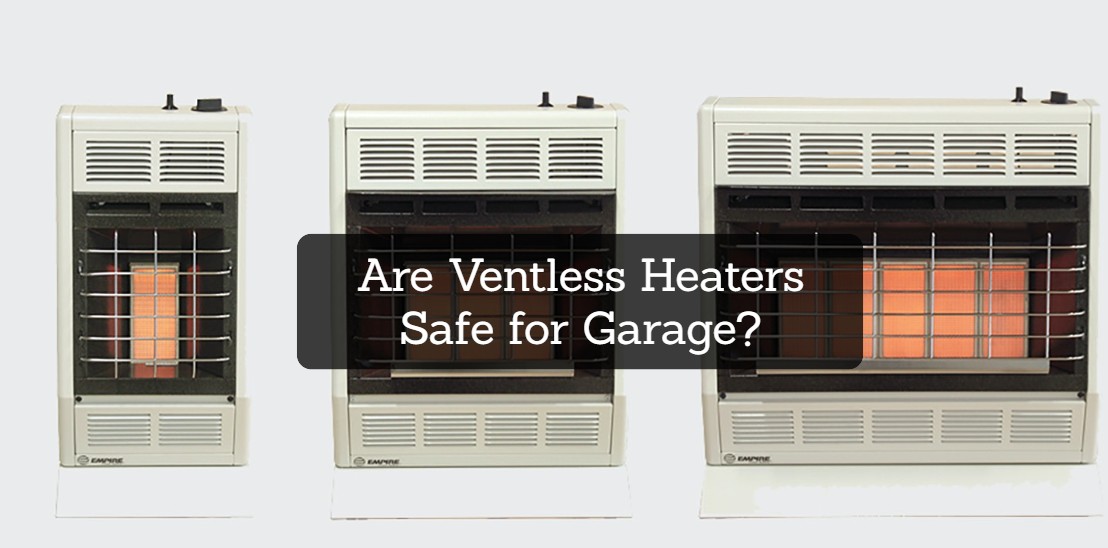In the quest for efficient and convenient heating solutions, particularly for spaces like garages that are often not connected to a home’s central heating system, ventless heaters have emerged as a popular choice among homeowners.
Known for their ease of installation and ability to operate without the need for external venting, ventless heaters have become a go-to option for many seeking to add warmth to spaces where traditional heating methods may be impractical or too costly to install. By the way, I offer you to check out the article with the Best Portable Garage Heaters Compared.
Unlike their vented counterparts, which require a chimney or an external vent to dispel exhaust gases, ventless heaters are designed to operate indoors without direct venting to the outside atmosphere. This unique feature not only simplifies their installation process but also enhances their appeal by reducing installation and operational costs.
Ventless heaters utilize a variety of fuels, including natural gas, propane, and electricity, to generate heat. By burning fuel efficiently, these heaters are designed to maximize the heat output while minimizing waste and the need for external exhaust. This efficiency is one of the key reasons behind their growing popularity, as it can lead to significant savings on heating bills, especially in the colder months.
Moreover, the absence of the need to cut through external walls for venting purposes makes ventless heaters an attractive option for garage spaces, where maintaining structural integrity and minimizing construction work is often a priority.
However, the very feature that makes ventless heaters so appealing—the lack of external venting—also raises important safety considerations. The combustion process in ventless heaters, while efficient, produces by-products such as water vapor and, in the case of gas-fueled units, small amounts of carbon monoxide and other gases. In well-ventilated areas, these by-products typically disperse without reaching harmful levels.
But in enclosed spaces like garages, where ventilation may be limited, the accumulation of these by-products can pose health risks. Additionally, the operation of gas-powered ventless heaters consumes oxygen, which can lead to decreased oxygen levels in poorly ventilated spaces, further complicating safety concerns.
You may also like: 7 Best Comfort Zone Garage Heaters
Definition and How They Work
Ventless heaters, also known as vent-free heaters, are heating units designed to operate without the need to vent the combustion by-products outside the home.
This design distinguishes them from traditional vented heating systems that require a chimney or external vent. The technology behind ventless heaters allows for a nearly complete combustion process, which minimizes the production of harmful exhaust gases. Two primary technologies underpin most ventless heaters: blue flame and infrared.
- Blue Flame Heaters work by combusting gas to produce a blue flame, heating the air directly around it. This warmed air then circulates throughout the room, raising the ambient temperature. The blue flame technology is efficient and effective in evenly heating larger spaces, as it relies on convection currents to distribute warmth.
- Infrared Heaters, on the other hand, directly heat objects and people in the room through radiant heat. Instead of warming the air, infrared heaters emit infrared rays that transfer heat directly to objects in their path, making them highly efficient for targeted heating. This method can provide immediate warmth to people and objects, making it ideal for spaces where quick heating is desired.
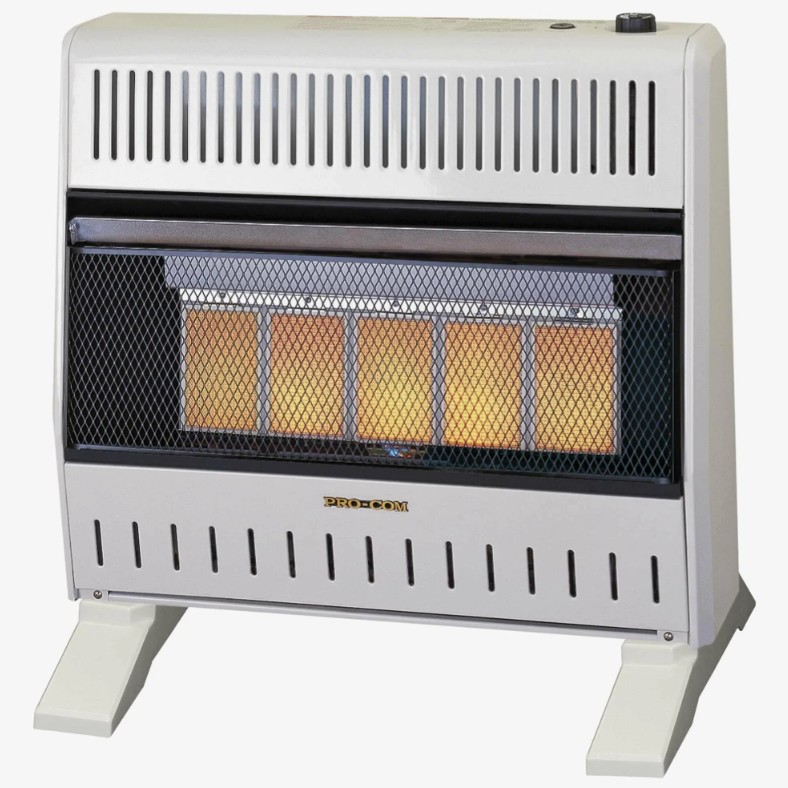
Types of Ventless Heaters
Ventless heaters can be powered by natural gas, propane, or electricity, each with its specific applications and benefits in a garage setting:
- Natural Gas Ventless Heaters are connected to the home’s gas supply, offering a cost-effective heating solution due to the lower cost of natural gas. They are well-suited for continuous use, such as keeping a garage warm throughout the winter months.
- Propane Ventless Heaters use portable propane tanks, making them a versatile option for garages that do not have a natural gas line. They are ideal for heating spaces where gas supply lines are not available or as a portable heating solution.
- Electric Ventless Heaters do not involve combustion, thus eliminating concerns about gas emissions. They are perfect for smaller garages or workshops where installing a gas heater might not be feasible. Electric models are often chosen for their ease of use and installation, requiring only an electrical outlet to operate.
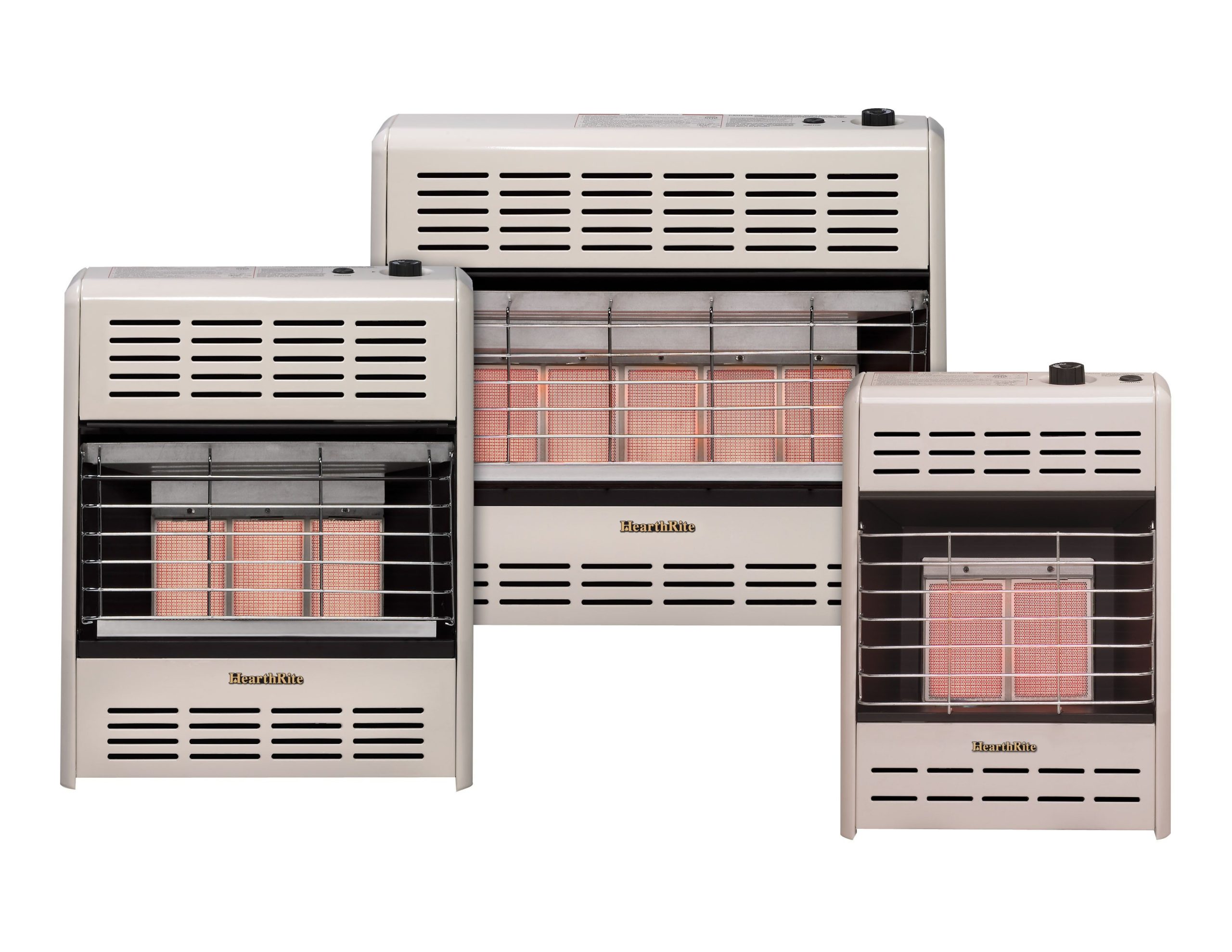
You may also like: 7 Best Diesel Garage Heaters
Efficiency and Cost-Effectiveness
One of the most significant advantages of ventless heaters is their efficiency. They are designed to operate at nearly 100% efficiency, meaning that almost all the fuel consumed is converted directly into heat. This high level of efficiency can result in substantial savings on heating costs, especially when compared to other heating methods that may lose a significant portion of heat through venting. For garage spaces, which may not require constant heating, the ability to quickly warm the space with minimal fuel consumption is particularly beneficial.
Ease of Installation
The absence of the need for ductwork, chimneys, or external venting makes ventless heaters exceptionally easy to install. This simplicity not only reduces installation costs but also allows homeowners to place the heater in the most effective location for heat distribution. Unlike vented systems, which may be limited by the need to connect to an external vent, ventless heaters offer flexibility in placement, making them an ideal choice for garages where space and layout may restrict installation options.
This ease of installation, combined with the cost savings and efficiency of ventless heaters, makes them an attractive option for those looking to add warmth to their garages without the complexity and expense of traditional heating solutions.
The adoption of ventless heaters in garages brings to the forefront several safety concerns, primarily due to the emission of combustion by-products. These units, while efficient, produce trace amounts of substances like carbon monoxide (CO) and nitrogen dioxide (NO2), both of which pose health risks in poorly ventilated spaces.
- Emission of Combustion By-products: Gas-powered ventless heaters combust fuel to produce heat, and this process can emit low levels of carbon monoxide and nitrogen dioxide. Carbon monoxide is a colorless, odorless gas that can cause headaches, dizziness, nausea, and even fatal poisoning at high levels. Nitrogen dioxide, another by-product, can irritate the respiratory system, particularly affecting individuals with asthma or other respiratory conditions. The risk associated with these emissions underscores the importance of proper use and ventilation when operating ventless heaters in enclosed spaces like garages.
- Oxygen Depletion Sensors (ODS) and Their Importance: To mitigate the risks associated with oxygen depletion and the accumulation of combustion by-products, many ventless heaters are equipped with Oxygen Depletion Sensors. The ODS is designed to monitor the oxygen level in the room. If oxygen levels drop below a safe threshold—a sign that combustion gases may be accumulating—the ODS will automatically shut off the heater. This safety feature is crucial in preventing the potential dangers of operating gas-burning appliances in confined spaces.
- Manufacturer’s Safety Guidelines: Adhering to the manufacturer’s safety guidelines is vital for the safe installation and operation of ventless heaters. These guidelines provide specific instructions on positioning the heater to ensure adequate ventilation, perform regular maintenance checks, and identify any operational issues that could lead to unsafe conditions. Following these recommendations helps ensure the heater functions efficiently and safely, minimizing the risk of exposure to harmful emissions.
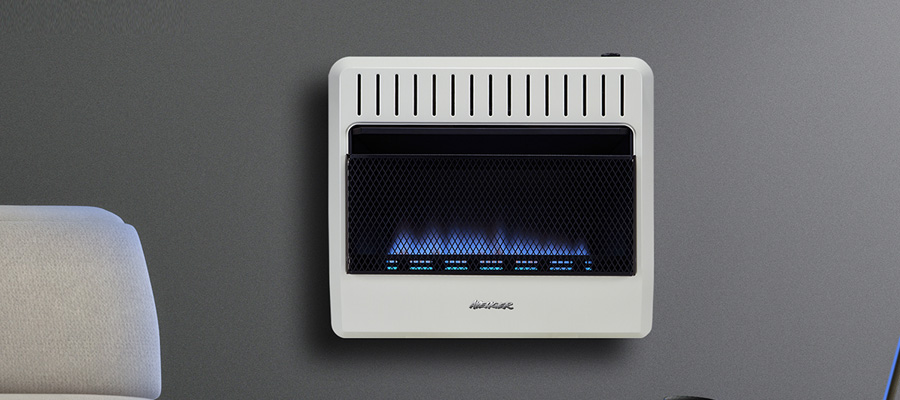
You may also like: 7 Best Garage Refrigerator Heater Kits to Buy
The installation and use of ventless heaters in garages are subject to legal and regulatory considerations that vary by location. Understanding and complying with these regulations is essential to ensure safety and avoid potential legal issues.
- Local Building Codes and Regulations: Before installing a ventless heater in a garage, homeowners should familiarize themselves with local building codes and regulations. Some regions may have specific restrictions or requirements for the use of ventless heating appliances, including minimum room size, ventilation requirements, and permissible fuel types. Compliance with these regulations not only ensures the safe use of the heater but also prevents potential legal complications that could arise from non-compliance.
- Insurance Implications: The use of ventless heaters can also have implications for homeowner’s insurance policies. Some insurance companies may have specific clauses related to the use of such heaters, potentially affecting coverage. In some cases, the use of ventless heaters without adequate ventilation or in violation of local regulations may lead to denied claims in the event of an incident. It is advisable for homeowners to consult their insurance provider to understand how the use of a ventless heater might impact their policy, ensuring they are fully covered and aware of any requirements or restrictions.
Navigating the safety concerns and legal considerations associated with ventless heaters is crucial for homeowners considering these devices for garage heating. By understanding the potential risks, the importance of safety features like ODS, and complying with local regulations and insurance requirements, homeowners can make informed decisions about safely incorporating ventless heaters into their garages.

To ensure the safe operation of ventless heaters in garages, adhering to best practices for their use is essential. These practices are centered around proper ventilation, regular maintenance, and professional installation.
- Proper Ventilation: The cornerstone of safely using ventless heaters is to ensure that the garage is adequately ventilated. This involves maintaining a consistent flow of fresh air to dilute and expel any combustion by-products. Homeowners should consider keeping windows or doors slightly open during the heater’s operation or installing vents that can facilitate air exchange. This measure significantly reduces the risk of harmful gas accumulation and promotes a healthier breathing environment.
- Regular Maintenance: Like all heating appliances, ventless heaters require regular maintenance to operate safely and efficiently. This includes annual inspections to check for blockages, leaks, or any wear and tear that might affect the unit’s safety. Cleaning the heater’s components, such as the burner and control mechanisms, can prevent malfunction and ensure the unit is functioning correctly. Adhering to the maintenance schedule recommended by the manufacturer not only extends the life of the heater but also safeguards against potential hazards.
- Installation Considerations: While many ventless heaters are marketed as easy to install, consulting with professionals to handle the installation can ensure compliance with safety standards and local regulations. Professional installers can assess the garage space to determine the optimal location for the heater, considering factors like ventilation, clearance from combustible materials, and overall safety. This step is crucial in mitigating risks associated with improper installation, such as inadequate ventilation or exposure to flammable substances.
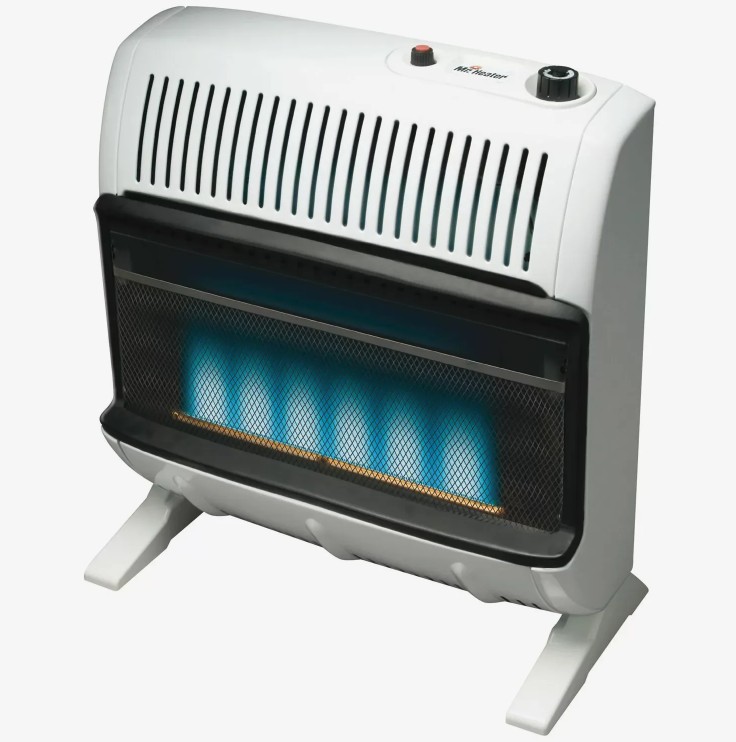
You may also like: 7 Best 120V Heaters for Garage
While ventless heaters offer convenience and efficiency, considering alternatives that better suit individual needs and safety concerns is wise.
- Vented Heaters: Vented heating options require an external vent or chimney to expel combustion by-products outside, significantly reducing the risk of indoor air quality issues. These systems can be more complex and costly to install but provide a safer heating solution by directly removing potentially harmful gases from the garage.
- Electric Heaters: Electric heaters are a popular alternative, offering the advantage of producing heat without combustion, thereby eliminating the risk of carbon monoxide or nitrogen dioxide emissions. They are suitable for smaller garages or as supplemental heat sources, providing a clean and efficient heating solution without the need for venting.
Conclusion
Throughout this article, we’ve explored the nuances of ventless heaters, including their operation, benefits, safety concerns, and legal considerations. The key takeaway is the paramount importance of safety and adherence to local regulations when considering ventless heaters for garage spaces. While these heaters offer advantages in terms of efficiency and ease of installation, the potential risks associated with improper use cannot be overlooked.
Call to Action
For those considering a ventless heater for their garage, it’s crucial to perform thorough research and weigh all factors carefully. Consulting with heating professionals and checking local guidelines can provide valuable insights into the best practices for safe use and compliance. Ultimately, ensuring the safety and well-being of your home and family should be the top priority in making an informed decision about heating your garage.

